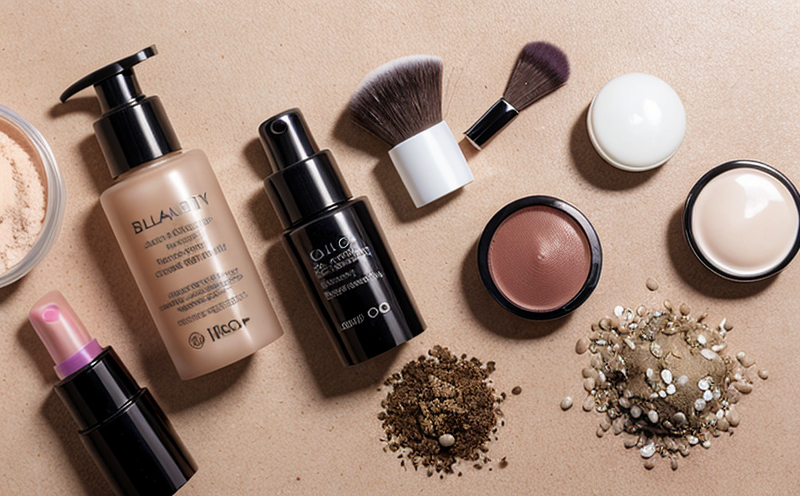OECD 311 Anaerobic Biodegradability Testing of Cosmetic Products
The OECD 311 test is a critical tool for ensuring the environmental safety and sustainability of cosmetic products. This testing method evaluates whether a cosmetic product can degrade in an anaerobic environment, which simulates conditions found in landfills or other waste disposal sites. By assessing biodegradability under these conditions, manufacturers and regulatory bodies can determine if a cosmetic product will contribute to pollution or persist in the environment.
The OECD 311 test is particularly relevant for formulators looking to develop products that are not only effective but also environmentally responsible. It provides valuable insights into how different components of a cosmetic formulation interact with anaerobic conditions, which can inform formula adjustments and ingredient selection. This testing aligns with growing consumer demand for sustainable beauty products.
The test is conducted using a closed bottle system where the sample is incubated under controlled temperature and humidity conditions. The presence or absence of carbon dioxide is monitored to determine biodegradation rates. Results are typically reported as the percentage of degradation over time, which helps in understanding how quickly a product can break down in an anaerobic environment.
Compliance with OECD 311 testing is essential for companies looking to meet regulatory requirements and ensure their products do not contribute to environmental harm. This test supports broader sustainability goals by encouraging the development of eco-friendly formulations that are less likely to persist in landfills or waterways.
The importance of this testing cannot be overstated, especially as regulations around cosmetic biodegradability become more stringent globally. Understanding and meeting these requirements can help companies stay ahead of regulatory changes and maintain a positive environmental reputation. The OECD 311 test is just one part of a comprehensive approach to sustainable product development that includes ingredient sourcing, packaging design, and lifecycle assessment.
| Application | Description |
|---|---|
| Data for Regulatory Compliance | Ensure that cosmetic products meet the biodegradability criteria required by various regulatory bodies. |
| Innovation in Formulation | Identify and eliminate ingredients or formulations that do not degrade properly under anaerobic conditions. |
| Sustainability Reporting | Provide data to support sustainability initiatives and communicate environmental responsibility to consumers. |
| Product Differentiation | Create a competitive edge by offering products that are proven to be environmentally friendly. |
Industry Applications
- Data for Regulatory Compliance
- Innovation in Formulation
- Sustainability Reporting
- Product Differentiation
International Acceptance and Recognition
The OECD 311 test is widely recognized by regulatory bodies around the world, including those in Europe (OECD), North America (EPA), and Asia-Pacific regions. Its acceptance ensures that results from this test can be used to meet various international standards for biodegradability assessment.
Compliance with OECD 311 testing is not only a requirement for cosmetic companies operating within the European Union but also for those seeking to export their products globally. This global recognition underscores the importance of consistent and reliable data when assessing the environmental impact of cosmetic products.
The test’s widespread acceptance is due in part to its rigorous methodology, which has been validated by extensive research and field trials. The OECD 311 test provides a standardized approach that ensures consistency across different laboratories, making it an essential tool for both local and international markets.
Regulatory bodies such as the European Chemicals Agency (ECHA) and the U.S. Environmental Protection Agency (EPA) have incorporated OECD 311 into their regulatory frameworks. This integration into global standards further emphasizes its significance in the cosmetic industry’s commitment to environmental responsibility.
The widespread acceptance of this test also supports a more transparent and consistent approach to sustainability reporting, allowing companies to communicate their efforts effectively to stakeholders, including investors, customers, and governments.
Competitive Advantage and Market Impact
- Regulatory Compliance
- Innovation in Formulation
- Sustainability Reporting
- Product Differentiation
The OECD 311 test provides a competitive edge by ensuring that cosmetic products meet the highest environmental standards. This is crucial for companies aiming to differentiate their offerings and appeal to environmentally conscious consumers.
By demonstrating commitment to sustainability through rigorous testing, companies can build trust with customers who value ethical business practices. This can lead to increased market share and customer loyalty. Additionally, compliance with such tests can open up new markets where regulatory requirements are stringent or evolving.
The test also supports innovation in formulation by identifying ingredients that do not degrade properly under anaerobic conditions. This insight enables companies to reformulate products to ensure they meet both performance expectations and environmental standards.





